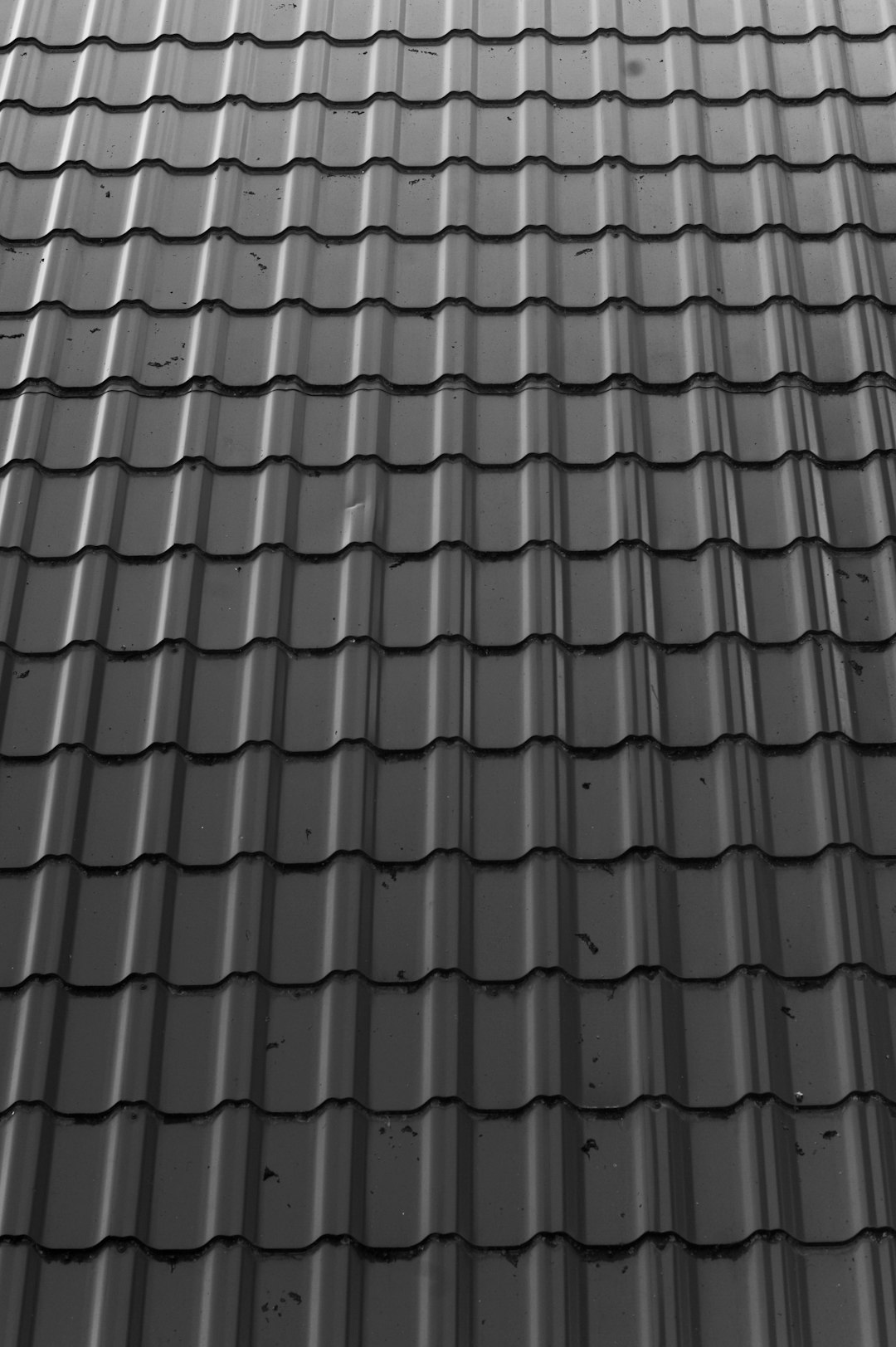When choosing roofing materials for your home, it's crucial to consider local climate conditions, structural requirements, architectural style, durability, lifespan, maintenance needs, and environmental impact. Asphalt shingles are cost-effective and easy to install but may require more frequent replacement. Slate or concrete tiles, metal roofs, and recycled metal options offer longer lifespans, with metal roofs providing energy efficiency and fire resistance. Cedar shake roofs can enhance curb appeal but come with higher maintenance costs. Eco-friendly choices like green roofs and recycled metal roofs promote sustainability by conserving resources, reducing waste, and improving energy efficiency. The installation process for each material varies in complexity, affecting both the cost and timeline of your project. It's important to research, consider your budget, and possibly consult with professional roofers to ensure you select a roof that is durable, complements your home's design, fits within your financial constraints, and adheres to local building codes. This comprehensive approach ensures a well-informed decision that balances functionality, aesthetics, and environmental responsibility in your home's roofing system.
When it comes to safeguarding your home, the roof’s role is pivotal. Selecting the optimal roofing material involves a blend of considerations: your home’s unique climate exposure, structural integrity, and architectural style. This article delves into the essential aspects of making an informed decision for your roof, from evaluating durability and longevity to assessing budget and value. We’ll guide you through understanding your home’s needs, exploring eco-friendly options, and navigating the installation process, ensuring your choice aligns with both your home’s character and your financial considerations. Discover the key factors in selecting sustainable, energy-efficient roofing materials and understand how each option performs in diverse environments, all while considering the cost implications and return on investment. With the right knowledge at hand, you can make a well-informed choice for a resilient and aesthetically pleasing roof that stands the test of time.
- Understanding Your Home's Needs: Climate, Structure, and Style Considerations for Roofing Material Selection
- Evaluating Durability and Longevity: A Guide to Roofing Material Lifespans and Performance in Diverse Environments
- Assessing Budget and Value: Cost Analysis of Different Roofing Options and Their Return on Investment
- Exploring Eco-Friendly Choices: Sustainable and Energy-Efficient Roofing Materials for Environmentally Conscious Homeowners
- The Installation Process: Factors Influencing the Accessibility and Complexity of Roofing Material Implementation
Understanding Your Home's Needs: Climate, Structure, and Style Considerations for Roofing Material Selection

When selecting the appropriate roofing material for your home, it’s crucial to consider the unique requirements dictated by your local climate, the structural integrity of your dwelling, and the architectural style that complements your property. Climate plays a pivotal role in determining the most suitable roofing option; for instance, regions with heavy snowfall should opt for materials capable of bearing substantial loads without compromising structural safety. Similarly, areas prone to high winds or severe storms may necessitate impact-resistant options like metal roofing to ensure longevity and protection. The material’s durability and maintenance requirements should align with the regional weather patterns to avoid premature deterioration or costly upkeep.
In terms of structure, the existing roof’s frame and pitch must be compatible with the new material. Some materials, such as slate or clay tiles, are incredibly heavy and may require additional support or a structural assessment before installation. On the other hand, lighter options like asphalt shingles can often be laid over an existing layer, saving time and resources. Additionally, the style of your home’s architecture can influence the choice; a classic colonial might benefit from the aesthetic appeal of wood shakes or slate, while contemporary designs could integrate metal or synthetic materials that offer a modern look alongside functionality. Aligning these factors ensures that the chosen roofing material not only meets practical needs but also enhances your home’s curb appeal and resale value. Roofing materials come in various options, each with its own set of benefits and drawbacks, so it’s essential to conduct thorough research or consult with a professional roofer to make the best decision for your specific situation.
Evaluating Durability and Longevity: A Guide to Roofing Material Lifespans and Performance in Diverse Environments

When selecting roofing materials for your home, evaluating durability and longevity is paramount to ensure a long-lasting and protective covering against the elements. Different roofing options come with distinct lifespans that are influenced by their resistance to environmental factors such as humidity, temperature fluctuations, wind, and precipitation. For instance, asphalt shingles, a popular choice for many homeowners due to their affordability and ease of installation, generally last 15 to 30 years, depending on the climate and maintenance they receive. On the other hand, more durable options like slate or concrete tiles can offer longevity of 50 to 100 years, making them a cost-effective solution over time. Metal roofs, with their robust construction and variety of alloys available, can endure for 40 to 70 years and are known for their high performance in virtually all climates. When assessing these materials, it’s essential to consider the local climate and weather patterns specific to your geographic location. For example, areas with heavy snowfall might benefit from the lightweight and strong properties of metal roofs, which can also reduce energy costs due to their reflective nature. Similarly, regions prone to fires may find fire-resistant materials like metal or composite asphalt shingles more suitable. To make an informed decision, homeowners should consult with professional roofers who understand the nuances of different materials and how they interact with the environment. This expert guidance can help you choose the right roofing material that balances cost, performance, and longevity for your specific needs.
Assessing Budget and Value: Cost Analysis of Different Roofing Options and Their Return on Investment

When selecting the most suitable roofing material for your home, a critical aspect to consider is the cost analysis and return on investment (ROI) each option offers. Assessing your budget is the first step in narrowing down your choices; it’s imperative to understand how much you can realistically allocate towards this significant home improvement project. Different roofing materials come with varying price tags, from asphalt shingles, which are cost-effective and widely available, to more premium options like slate or metal roofing, which are durable and can be more expensive upfront but may offer greater longevity and potential savings over time.
To make an informed decision, it’s essential to evaluate the long-term value each material brings. For instance, while asphalt shingles might have a lower initial cost, their shorter lifespan means they could require replacement more frequently than materials like tile or metal, which can last several decades. Conversely, higher-cost options like cedar shake roofs may provide an authentic, visually appealing look that adds to your home’s value and curb appeal. It’s advisable to research the expected lifespan and maintenance requirements of each material, as these factors will influence both the initial investment and the ongoing costs throughout the roof’s life cycle. Additionally, consider the ROI when it comes time to sell your home; certain materials may recoup more of their cost in increased property values than others. Roofing options with a proven track record of durability and energy efficiency, such as metal or solar roofing systems, can also offer financial incentives through tax credits and reduced energy bills, further enhancing their value proposition. It’s important to conduct thorough research and consult with professional roofers who can provide insights tailored to your local climate, building codes, and home design, ensuring you choose the right roofing material that aligns with both your budgetary constraints and long-term financial goals.
Exploring Eco-Friendly Choices: Sustainable and Energy-Efficient Roofing Materials for Environmentally Conscious Homeowners

When homeowners prioritize sustainability and energy efficiency, selecting eco-friendly roofing materials is a pivotal decision that aligns with their environmental values. Among the array of sustainable options, recycled metal roofing stands out as a durable and highly reflective choice, reducing heat absorption and lowering cooling costs. These metals, often composed of steel or aluminum, can be sourced from post-consumer products, minimizing new resource extraction and diverting waste from landfills. Additionally, when properly installed, metal roofs are designed to last for decades, thereby offering a long-term solution with minimal environmental impact.
Another eco-conscious option is green roofing, which involves planting a vegetative layer over a waterproof membrane. Not only does this living roof provide insulation, reducing both heating and cooling needs, but it also absorbs rainwater, improves air quality, and extends the lifespan of the roof itself. Moreover, the choice of plants is crucial; they should be native species requiring little maintenance and well-adapted to the local climate. These green solutions not only contribute to a home’s energy efficiency but also create a harmonious integration with the surrounding environment.
The Installation Process: Factors Influencing the Accessibility and Complexity of Roofing Material Implementation

When selecting roofing materials for your home, understanding the installation process is as crucial as the materials themselves. The accessibility and complexity of roofing material implementation are significant factors that can influence the overall cost and timeline of a new roof project. Traditional asphalt shingles, for example, often have a straightforward installation process due to their lightweight nature and widespread use among roofers, making them an accessible choice for most residential homes. In contrast, materials like slate or clay tiles are heavier and require additional structural support, which may necessitate an evaluation of your home’s current infrastructure to ensure it can handle the extra load. This could involve reinforcing the roof deck or making other structural adjustments before the installation can proceed. Similarly, the use of metal roofing systems might demand specialized knowledge and tools due to their interlocking design and potential for energy-efficient installations like reflective coatings. Homeowners should also consider local weather conditions, as these can affect the installation schedule and the type of underlayment or flashing needed to prevent leaks. The choice between a shingle, metal, or slate roof is not just about aesthetics; it’s about aligning the material’s properties with your home’s design, your budget, and the expertise of local roofing contractors. Proper planning and consultation with experienced professionals can ensure that the chosen material not only suits your home’s architectural style but also is installed safely, efficiently, and in compliance with building codes and regulations.
When selecting the right roofing material for your home, it’s crucial to consider a variety of factors that align with your regional climate, architectural style, and personal preferences. This article has guided you through understanding your home’s unique needs, evaluating the durability and longevity of different materials, assessing budget implications, and exploring eco-friendly options that are both sustainable and energy-efficient. Additionally, the importance of considering the installation process and its impact on accessibility and complexity has been highlighted. By carefully weighing these elements, you can make an informed decision that enhances your home’s protection and complements its aesthetic while also potentially offering a favorable return on investment over time. With this comprehensive overview in hand, you are now well-equipped to choose the ideal roofing material for your abode.
